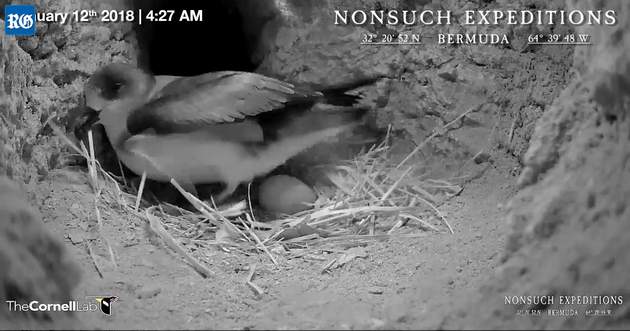Recent News
Minister gives update on Sargasso Sea AllianceFriday, April 27, 2012
Britain’s Foreign and Commonwealth Office has a Full Science Case for their review as Bermuda moves to establish international protection of the Sargasso Sea.
Minister Bean: Sargasso Sea Alliance Progress
Thursday, April 26, 2012
MARC A. BEAN, JP, MP ON: SARGASSO SEA PROJECT UPDATE; SCIENCE CASE
Rubis donates fuel for educational boat
Thursday, April 19, 2012
Rubis Energy Bermuda has donated another year of fuel for education to facilitate marine conservation excursions for local schoolchildren to support conservation education programmes.
RUBiS donates a year's worth of fuel to BZS
Tuesday, April 17, 2012
TUESDAY, APRIL 17: RUBIS has gifted a year’s worth of diesel boat fuel to the Bermuda Zoological Society, it was announced today.
Aquarium shark released back into the wild
Tuesday, March 20, 2012
A shark called Osbourne has been released back to the sea by the Bermuda Aquarium and Zoo.
About
GovernanceAbout Us
Newsletter
Latest News
Gift & Bookstore
Contact
General Inquiries
info@bzs.bm
Latest News
All the latest updates and news from the Bermuda Aquarium, Museum, and Zoo, one of Bermuda's leading visitor attractions!
Owain Johnston-Barnes
Published Jan 15, 2018 at 8:00 am (Updated Jan 15, 2018 at 12:20 am)

This year’s cahow breeding season could be a record breaker, experts predicted yesterday.
Two thirds of the 125 known breeding pairs were nursing eggs by Friday.
And viewers of the CahowCam — a livestream of a nest on breeding site Nonsuch Island — were able to watch one of the endangered birds lay its single egg early yesterday morning.
Jean-Pierre Rouja, team leader of conservation group Nonsuch Expeditions, said the egg was laid at about 4.30am and marked the start of the sixth CahowCam season.
Mr Rouja added that the Bermuda team had signed off at 3am, but their partners from US-based Cornell Lab of Ornithology, who are in Hawaii to install a similar camera to track albatrosses, tweeted the event and alerted Bermuda.
Mr Rouja said that last year, with the support of Cornell, the CahowCam reached 600,000 international viewers who watched a total of 8.5 million minutes of footage.
He added: “As we expand the project, including new ways for our viewers and students to engage, we expect to greatly exceed those numbers this season.”
The same pair of cahows has used the filmed nest since 2009.
Jeremy Maderios, government chief conservation officer, said the pair’s egg last year took 51 days to hatch. Male and female birds take turns to care for the egg.
Mr Madeiros said: “After a record-breaking nesting season last year with 61 chicks fledging out to sea, we seem to be on track for breaking even more records this year.”
The majority of incubating adult cahows he had examined were heavier than normal, with some male birds approaching 500 grams.
Mr Madeiros said that suggested the birds had found good feeding conditions north of the Gulf Stream over the last month.
To watch the livestream, visit Nonsuchisland.com.
Anyone interested in updates on the cahows can also sign up for the Nonsuch Expedition Newsletter and select the CahowCam alert option.


